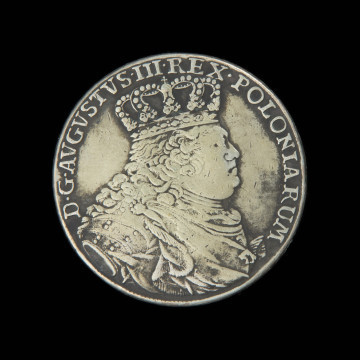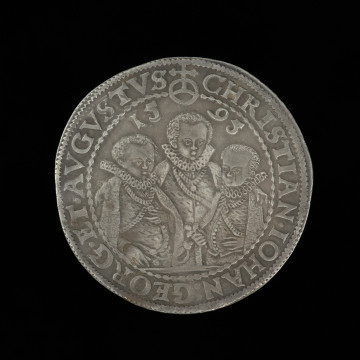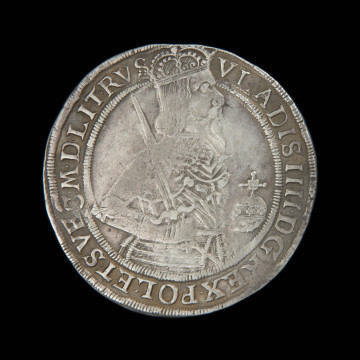
Thaler
1754
National Museum in Szczecin
Part of the collection: German coins
Saxony was one of the states of the German Reich that first started minting heavy silver coins, later known as thalers. In the early 16th century they were called guilder pennies and were minted rather rarely. The minting of thalers on a larger scale, based on silver deposits discovered at the end of the 15th century, started in Saxony in the mid-16th century. George the Bearded (1471-1539), Duke of Saxony from the Albertine dynasty, who ruled in the Meissen March, has had his name and image immortalised on the coin. The coin is commonly referred to as a thaler, but due to its weight, it is more of a medal close to the value of a thaler and a half. It is also interesting due to the date of issue located around the portrait of the ruler, which combines the date of the minting and the age of the Duke. Because of that, we learn that at the time of the issue of this thaler, George the Bearded was 56 years old. According to some theories, this coin, minted with two variants of the reverse, was connected with the wedding of the ruler’s cousin, John Frederick I (1503-1554) and was probably distributed to commemorate this ceremony – as such, it was not used as cash. Another significant element is the Latin inscription on the reverse – Let the name of the Lord be praised – which surrounds a ten-field escutcheon covered by three helmets with crests. George the Bearded was known for his devotion to the Catholic faith, as well as his rather soft treatment of the supporters of the Reformation. He also showed a commitment to the good quality of the money he minted, which gave rise to differences of opinion between him and the Elector of Saxony, Johann the Constant (1468-1532), who demanded a reduction in the amount of pure silver in the guilder penny, in line with the current devaluation of the Rhine gold guilder. George the Bearded managed to work out a compromise. He retained the old amount of pure silver in the guilder penny, but reduced it in petty coins. The consequence of this, however, was the establishment of two exchange rates of silver guilders – one for minted coins, and another for petty coins.
Mieszko Pawłowski
Other names
Taler
Author / creator
Dimensions
cały obiekt: diameter: 43.41 mm
Object type
coin, money
Technique
minting
Material
silver
Creation time / dating
Creation / finding place
Owner
National Museum in Szczecin
Identification number
Location / status

1754
National Museum in Szczecin

1595
National Museum in Szczecin

1657
National Museum in Szczecin
DISCOVER this TOPIC
National Museum in Szczecin
DISCOVER this PATH
Educational path